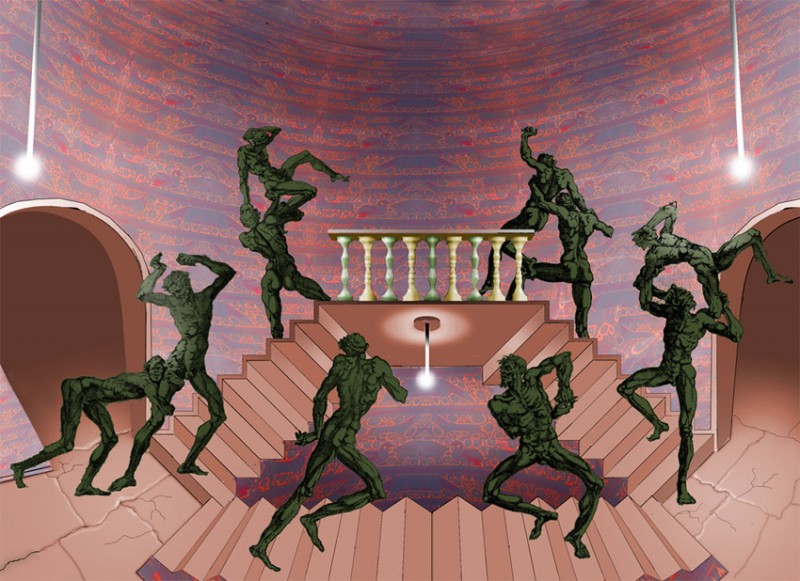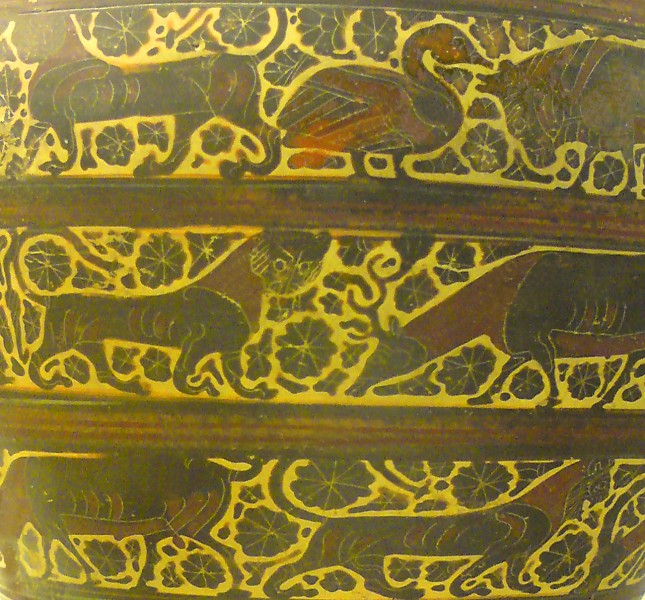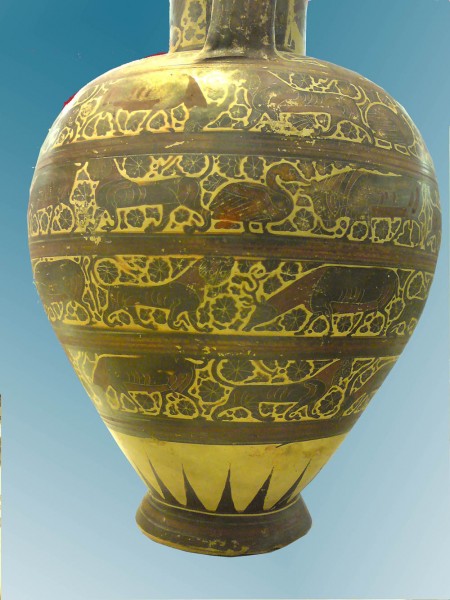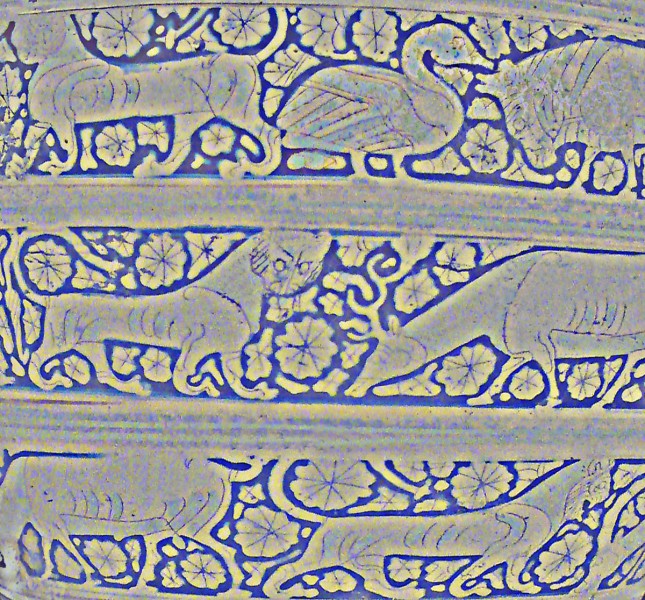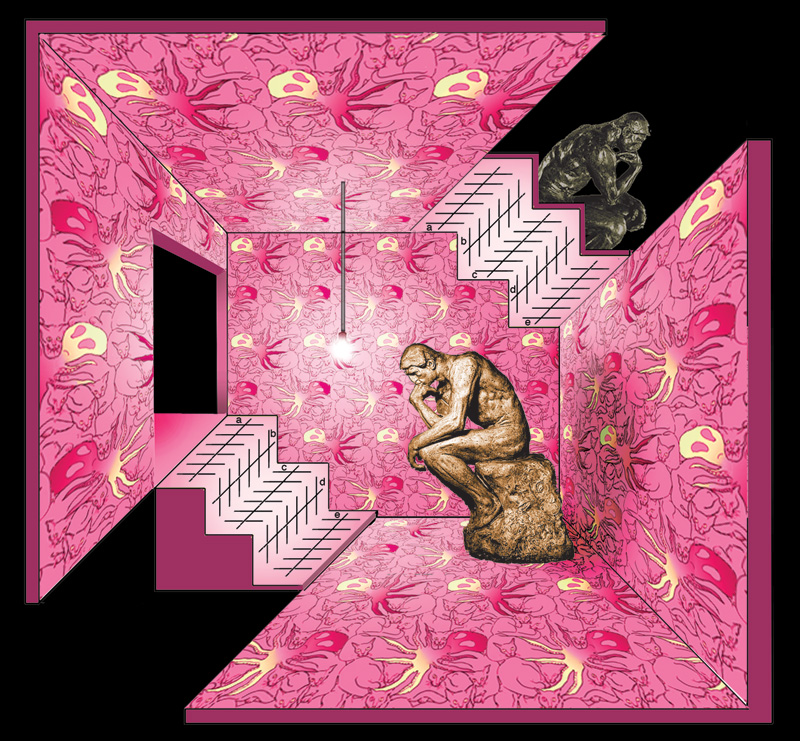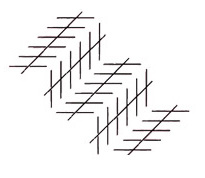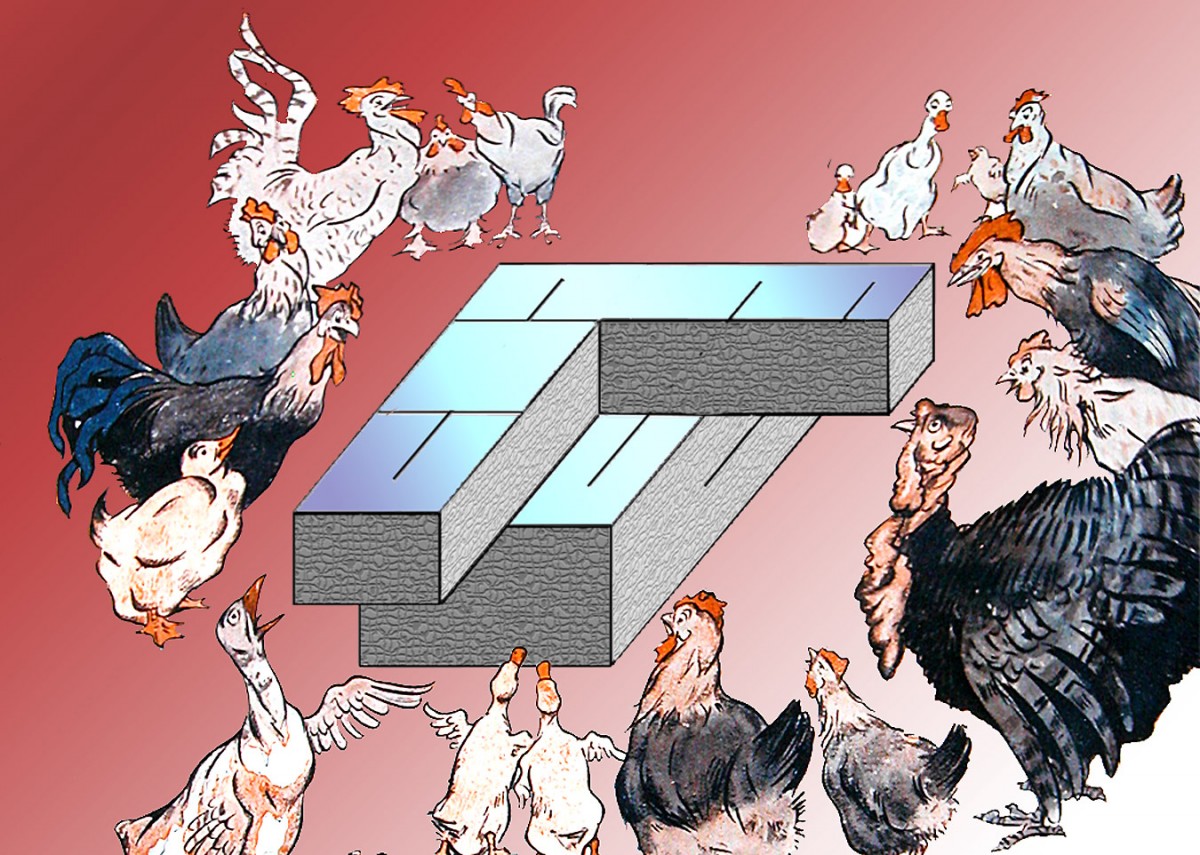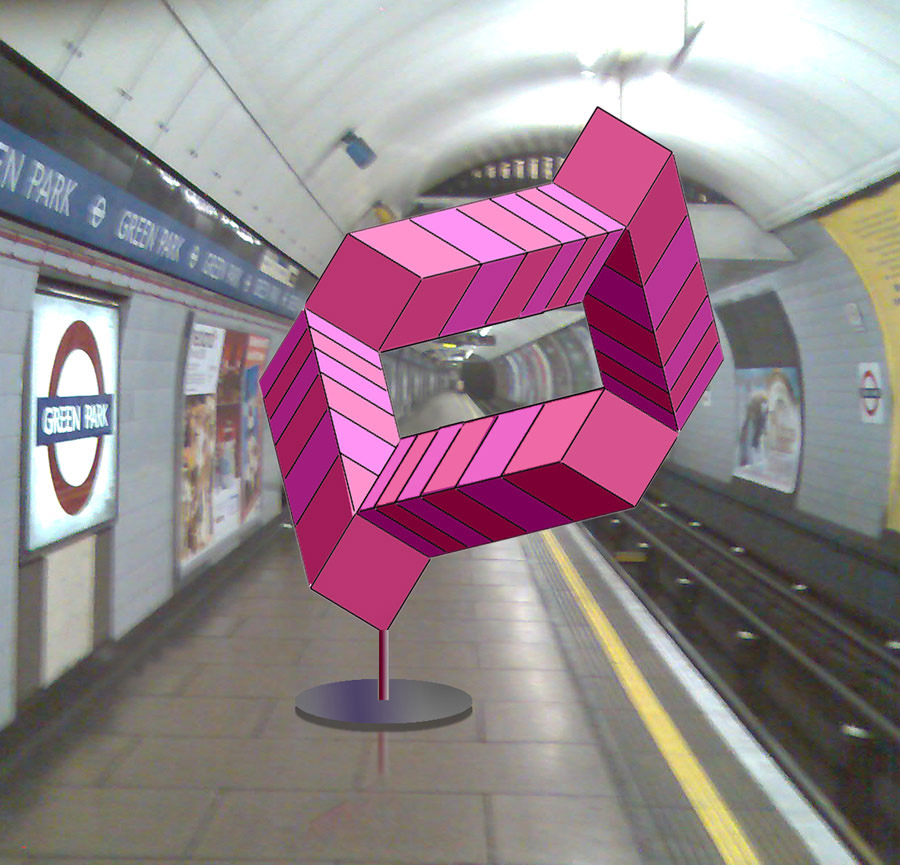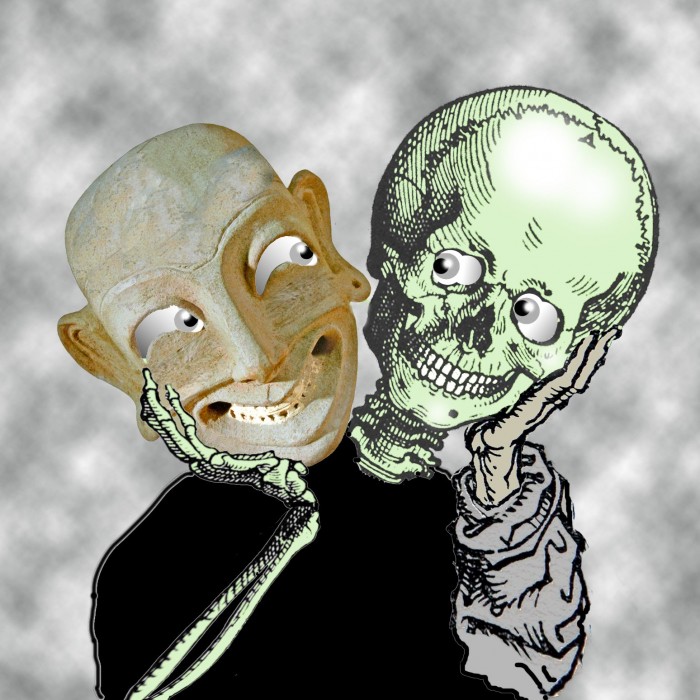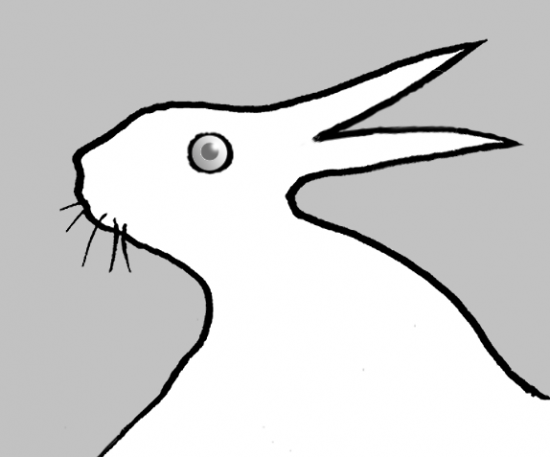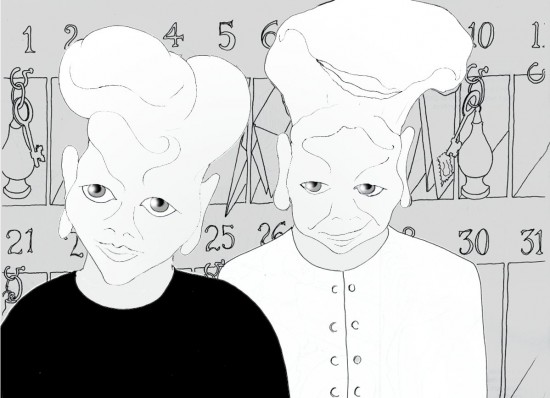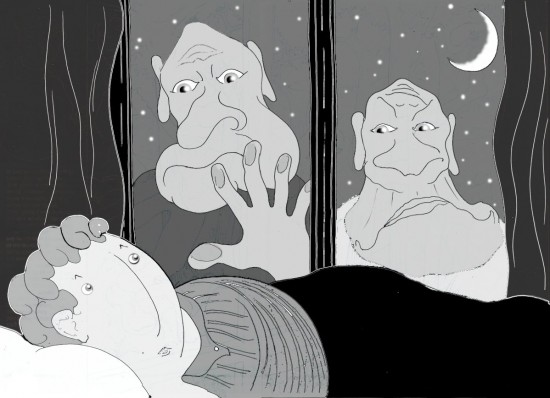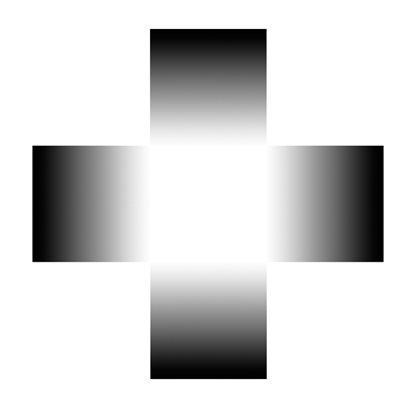Here are some crazy stairs. Look at the stairs leading up to the balcony, and at the foot of the stairs you’re looking down on them from above, whilst up by the balcony you’re looking up at them from below. Nothing wrong with that, in a perspective view, but these steps are in a parallel projection, which forbids it. As a result, the side of the steps that’s furthest from us, next to the outer wall down at ground level, has somehow twisted to become the side that’s nearest to the viewer up by the balcony, and vice versa. There’s a different twist to the stairs at the foot of the image. On those, if you start, say, on the right, you’ll find that the flat step surfaces have become vertical risers once you’ve passed the half way mark.
Update May 2012! There’s also a later version of this scene. I wanted to give it another go, because these stairs do have an extra twist to them …..
